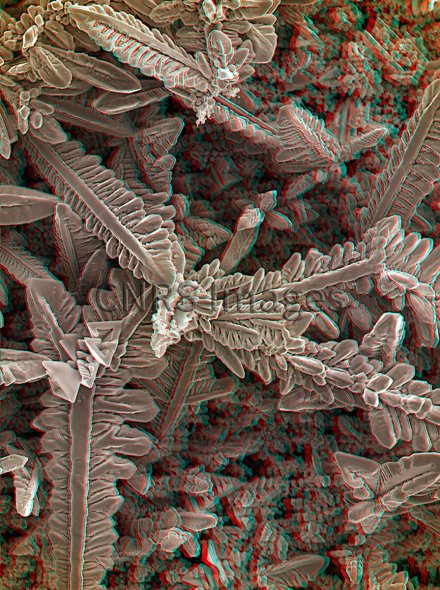Production year
2022

© Bertrand REBIERE / Damien VOIRY / ICGM / IEM / CNRS Images
20220122_0018
If you think this picture looks a bit blurry, try putting on a pair of 3D glasses, and you’ll be able to see it in relief. The photograph was produced using the anaglyph method, in which two images are superimposed, one in red, the other in cyan: the slight offset between the two creates the impression of depth. Featured here are stacked copper nanostructures, a metal that is a promising candidate for converting the billions of tons of CO2 that we release into the atmosphere every year into potential resources. To achieve this, researchers have developed copper-based catalysts like this one. These can efficiently convert CO2 into carbon monoxide (CO) and ethylene (C2H4), basic molecular building blocks that can be used by the petrochemical industry, and as fuels. This image was taken by scanning electron microscopy. It is one of the winners of the 2022 La preuve par l’image (LPPI) photography competition.
The use of media visible on the CNRS Images Platform can be granted on request. Any reproduction or representation is forbidden without prior authorization from CNRS Images (except for resources under Creative Commons license).
No modification of an image may be made without the prior consent of CNRS Images.
No use of an image for advertising purposes or distribution to a third party may be made without the prior agreement of CNRS Images.
For more information, please consult our general conditions
2022
Our work is guided by the way scientists question the world around them and we translate their research into images to help people to understand the world better and to awaken their curiosity and wonderment.